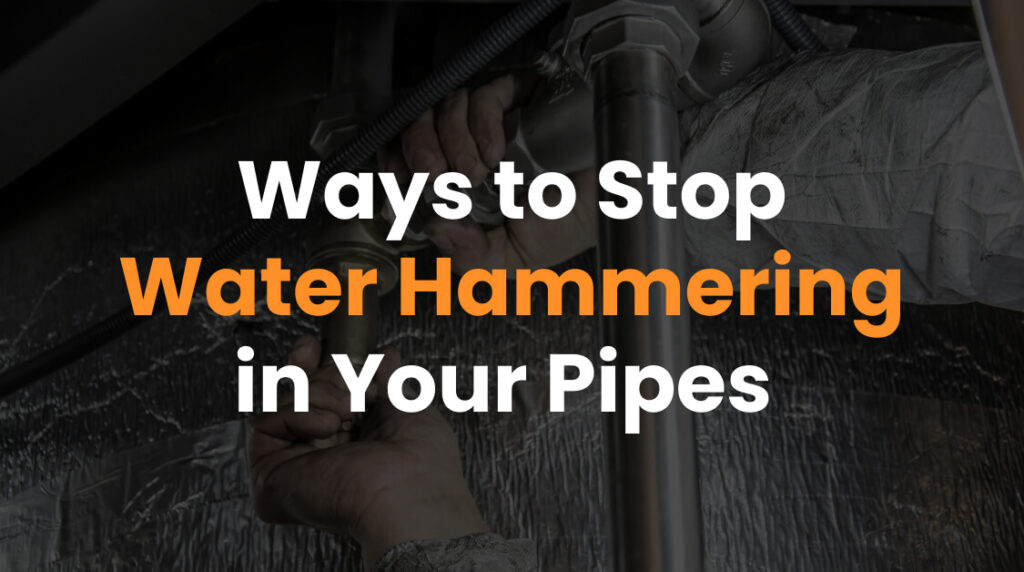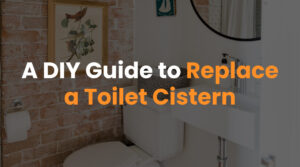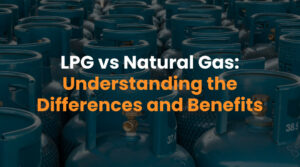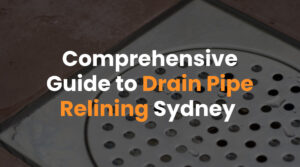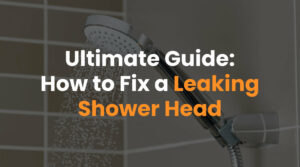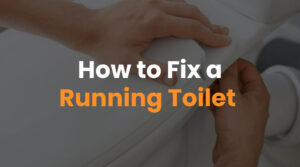Water hammer, a common plumbing issue, manifests as loud banging or hammering sounds in your pipes, often startling homeowners. This phenomenon occurs when the flow of water is suddenly stopped, causing shock waves that lead to these alarming sounds. Understanding and addressing water hammer is crucial not just for peace of mind but also to prevent potential damage to your plumbing system. In this guide by Plumbwell Plumbing Services, we’ll explore effective strategies to mitigate water hammer, ensuring your water pipes remain quiet and functional.
The Causes of Water Hammer: Why Your Pipes Bang
Understanding the root causes of water hammer in your plumbing system is the first step toward mitigating this noisy and potentially damaging phenomenon. Here’s a closer look at what triggers those alarming bangs in your pipes:
- Sudden Valve Closure: The abrupt stopping of water flow due to rapidly shutting valves creates a shock wave, echoing a bang throughout your plumbing.
- High Water Pressure: When the water pressure in your home surpasses 60 psi, it can significantly stress your pipes, manifesting as hammering sounds.
- Lack of Air Chambers: Designed to soften the blow of halted water flow, air chambers are vital. Their absence or malfunction leads to unmistakable water hammer effects.
- Quickly Closing Appliances: Household appliances, such as washing machines and dishwashers, can be culprits of water hammer by swiftly halting water flow, sending shock waves through your pipes.
How Water Hammer Can Damage Your Plumbing System
The consequences of water hammer extend beyond mere noise, posing real threats to the integrity of your plumbing system. Here’s how this phenomenon can lead to significant damage:
- Joint and Pipe Damage: The force of water hammer can weaken joints and fittings, potentially causing leaks and necessitating repairs.
- Appliance Stress: The same shock waves troubling your pipes can also shorten the lifespan of your household appliances, leading to premature wear and the need for replacements.
- Burst Pipes: The intense pressure spike associated with water hammer has the potential to burst pipes, causing extensive water damage and requiring urgent plumbing intervention.
- Degradation of Plumbing Components: Continuous exposure to water hammer can gradually wear down essential plumbing components, reducing efficiency and accelerating the need for their replacement.
Identifying Water Hammer: Common Signs and Symptoms
Water hammer is a plumbing phenomenon that can be both heard and felt, indicating potential issues within your piping system. Recognising the signs early can help prevent more significant damage:
- Loud Banging Noises: The most obvious sign of water hammer is a loud bang or series of bangs coming from your pipes, often resembling the sound of a hammer striking against the pipe walls. This noise typically occurs after shutting off a tap or when an appliance stops drawing water.
- Vibrations in Walls: You might feel vibrations or shuddering in the walls where pipes are located, caused by the hydraulic shock of water hammer.
- Pipes Moving: In severe cases, water hammer can cause visible movement of exposed pipes, especially after the sudden closure of a water valve.
- Recurring Leaks: Frequent water leaks at pipe joints, valves, or fittings might indicate the repeated stress of water hammer, weakening connections over time.
Preventing Water Hammer: Tips to Protect Your Pipes
Mitigating water hammer involves addressing the causes directly to prevent potential damage to your plumbing system:
- Install Water Hammer Arresters: These devices are specifically designed to absorb the shock wave that causes water hammer, preventing the energy from moving through your pipes.
- Secure Loose Pipes: Ensure all visible pipes are securely fastened to wall studs or joists to minimise movement that could lead to damage.
- Adjust Water Pressure: High water pressure exacerbates water hammer. Installing a pressure regulator on your main water supply can help maintain a safe pressure level, typically below 60 psi.
- Check and Repair Air Chambers: Traditional air chambers can become waterlogged over time. Draining your system to restore air pockets or installing mechanical air chambers can help cushion the shock of water stopping abruptly.
The Role of Valves in Stopping Water Hammer
Valves play a crucial role in both causing and preventing water hammer:
- Gradual Shut-Off: Water hammer often results from valves closing too quickly, cutting off water flow abruptly. Opt for valves that shut off water more gradually to reduce the risk.
- Pressure-Reducing Valves: Installing these valves can help manage water pressure throughout your home, lessening the intensity of water hammer.
- Maintenance and Replacement: Regularly check valves for signs of wear and tear. Worn valves can contribute to water hammer and may need to be replaced to maintain a smooth flow of water and prevent sudden stops.
Incorporating these measures can significantly reduce the occurrence of water hammer, protecting your plumbing system from unnecessary stress and potential damage.
Installing a Water Hammer Arrestor: A Key Solution
A water hammer arrestor is an essential device designed to absorb the shock wave that causes water hammer, providing a cushion that prevents the wave from traveling through pipes. Installing one can be a straightforward process:
- Identify the Problem Area: Determine where the water hammer is most pronounced. This is typically near appliances like washing machines or dishwashers.
- Choose the Right Arrestor: Arrestors come in various sizes. Select one that matches the size of your pipes and the flow rate of your water system.
- Turn Off the Water Supply: Ensure your home’s main water supply is shut off to avoid any accidents during installation.
- Install the Arrestor: For appliances, the arrestor should be installed on the hose bib (the valve to which hoses are connected). In other areas, it may need to be installed on the pipe itself, requiring cutting the pipe and soldering or threading the arrestor into place.
- Test Your System: Once installed, turn the water supply back on and test the system by running water through the area where the arrestor was installed to ensure the water hammer has been mitigated.
Fixing Water Hammer in Washing Machines: A Step-by-Step Guide
Washing machines are common culprits of water hammer due to their quick-operating valves. Here’s how to address it:
- Turn Off Water Supply: Start by shutting off the water supply to your washing machine.
- Install Water Hammer Arrestors: Attach water hammer arrestors directly to the washing machine valves. These are usually screw-on devices that can be easily installed without professional help.
- Secure the Hoses: Ensure that the washing machine hoses are securely attached and have no kinks or damage that could affect water flow.
- Check for Loose Pipes: Make sure that the pipes connected to your washing machine are securely fastened to prevent movement that can contribute to water hammer.
- Test the Machine: Turn the water supply back on and run your washing machine through a cycle to check if the water hammer has been resolved.
DIY Fixes for Water Hammer: Simple Solutions for Noisy Pipes
For those experiencing water hammer but not ready to install arrestors, there are a few DIY fixes:
- Drain Your Plumbing System: This can help reset air chambers that have become waterlogged. Turn off your main water supply, open the highest and lowest faucets in your home, and allow all water to drain out, then turn the water back on.
- Adjust Water Pressure: If your water pressure is too high, it can cause water hammer. Use a water pressure gauge to check the pressure and adjust it using your main water supply valve or install a pressure regulator.
- Secure Loose Pipes: Sometimes, simply securing loose pipes with pipe straps can reduce the vibrations that cause water hammer noises.
- Install Mini Water Hammer Arrestors: For sinks and other fixtures, mini arrestors that fit onto valves can be an easy and effective fix.
Professional Water Hammer Solutions: When to Call a Plumber
While many water hammer issues can be resolved with DIY solutions, certain situations necessitate professional intervention. Here’s when it’s wise to call a plumber:
- Persistent Water Hammer: If you’ve tried DIY fixes and the problem persists, it’s time to consult a professional. Plumbers can diagnose underlying issues that aren’t immediately apparent.
- Complex Plumbing Systems: Homes with older or complex plumbing systems may require a plumber’s expertise to properly address water hammer without causing additional issues.
- Installation of Arrestors in Hard-to-Reach Areas: If the optimal location for a water hammer arrestor is in a challenging or inaccessible area, a professional can ensure it’s installed correctly and safely.
- Significant Modifications Required: When adjustments to your home’s plumbing layout or pressure-reducing valves are needed, these modifications should be handled by a professional to ensure compliance with local codes and standards.
How to Choose the Right Water Hammer Arrester for Your Home
Selecting an appropriate water hammer arrestor involves several considerations to ensure effectiveness:
- Size and Capacity: Arrestors come in various sizes. Select one based on the size of your pipes and the volume of water flow. A plumber can help determine the best fit for your system.
- Type of Installation: Determine whether you need a screw-on arrestor for appliances like washing machines or a more complex inline model for your main water supply. The choice depends on where water hammer is most noticeable.
- Pressure Rating: Ensure the arrestor can withstand your home’s water pressure. Using an arrestor with an inadequate pressure rating can result in failure to stop water hammer.
- Material Compatibility: Check that the arrestor’s material is compatible with your plumbing to avoid corrosion or degradation over time.
Preventive Measures: How to Avoid Water Hammer in New Installations
Implementing preventive measures during new installations can save you from future water hammer problems:
- Plan for Air Chambers: Including air chambers in your plumbing design can absorb the shock of sudden water flow stoppage, preventing water hammer from occurring.
- Install Pressure-Regulating Devices: Equipping your plumbing system with pressure regulators can help maintain water pressure at a level that minimises the risk of water hammer.
- Choose Slow-Closing Valves: Opting for valves that close more slowly can reduce the chance of creating shock waves that lead to water hammer.
- Consult with Professionals: Engaging a plumber during the design and installation phase can ensure that your plumbing system is optimised to prevent water hammer, incorporating the latest technologies and methods for mitigation.
By understanding when to seek professional help, how to select the right water hammer arrestor, and implementing preventive strategies in new installations, homeowners can effectively manage and prevent water hammer, protecting their plumbing systems and ensuring peaceful, quiet operation.
The Impact of Pipe Layout on Water Hammer: What You Need to Know
The layout of your plumbing system plays a crucial role in the occurrence and severity of water hammer. Here are key insights into how pipe layout affects water hammer and what homeowners need to be aware of:
- Direction Changes and Length: Pipes that frequently change direction or run for long distances without support can exacerbate water hammer. Each turn or bend can increase the shock waves’ intensity as water flow is abruptly stopped or redirected.
- Pipe Diameter and Material: Smaller diameter pipes can accelerate water flow, increasing the likelihood of water hammer. Additionally, the material of the pipes (e.g., copper vs. PVC) affects their ability to absorb shock, with some materials transmitting the shock waves more significantly than others.
- Secure Mounting: Improperly secured pipes are more susceptible to water hammer because they can move more freely when shock waves occur. Ensuring pipes are well-supported and securely fastened at regular intervals can reduce the movement and noise associated with water hammer.
- Design Considerations: Incorporating water hammer arrestors and air chambers in the design phase, especially in critical points like valve connections and appliance hookups, can significantly mitigate water hammer effects. A thoughtful layout that minimises sharp turns and uses appropriate pipe sizes can also help.
Water Hammer and Water Pressure: Finding the Balance
Water pressure is a critical factor in the development of water hammer. Balancing water pressure within your plumbing system is essential for minimising the risk and impact of water hammer:
- High Water Pressure: Excessive water pressure is a common cause of water hammer. It can lead to faster water flow and more forceful closure of valves, which intensifies the shock waves through the pipes. Reducing water pressure using a pressure regulator can significantly diminish the likelihood of water hammer.
- Pressure Regulators: Installing a pressure regulator at the point where the main water supply enters your home allows you to control the overall water pressure within your plumbing system. Setting it to a safe level (typically around 60 psi) can help prevent water hammer while ensuring adequate water flow.
- Monitoring and Maintenance: Regularly checking your home’s water pressure with a pressure gauge can help detect any deviations from the ideal range. Periodic maintenance of your pressure regulator and other plumbing components is also crucial to ensure they function correctly and maintain the balance between preventing water hammer and providing sufficient water pressure for household needs.
Understanding the impact of pipe layout and the relationship between water hammer and water pressure is essential for homeowners looking to protect their plumbing systems. By considering these factors in the design, installation, and maintenance of your plumbing, you can achieve a balance that minimises water hammer while ensuring efficient and effective water delivery throughout your home.
Conclusion: Ensuring a Quiet and Safe Water Pipe System
Water hammer, a symptom of underlying plumbing issues, can lead to significant damage if ignored, necessitating an understanding of its causes, effects, and solutions. Preventive measures, such as installing water hammer arrestors and regular system maintenance, are essential for reducing the risk and ensuring a quiet, efficient plumbing system. In complex cases, professional plumbers provide tailored solutions that safeguard against the long-term impacts of water hammer. Proactive management of water hammer contributes to the longevity and health of your home’s plumbing, ensuring peace of mind and preventing potential damage.
FAQ: Common Questions About Stopping Water Hammer
What causes water hammer in my pipes?
Water hammer is caused by a sudden halt in the water flow, leading to shock waves that reverberate through the pipes. This can happen when a valve closes quickly, shutting off the water abruptly, or when appliances like washing machines stop drawing water, compressing the air in the pipes and creating a loud banging noise.
How can I fix a water hammer issue in my home?
Fixing water hammer often involves installing water hammer arresters on the water supply line to absorb the shock, ensuring air pockets are not trapped in your pipes, and sometimes adjusting the pressure in your pipes with a water pressure regulator connected to the main water supply.
Are there signs that indicate I have a water hammer problem?
A sign of water hammer is a loud banging noise coming from your pipes after shutting off the water. You might also notice vibrations or shuddering in walls close to the water supply line or changes in water pressure when using taps.
Can water hammer cause damage to my plumbing system?
Yes, water hammer can cause significant damage over time, including loosening joints, causing leaks, and even bursting pipes due to the high pressure created. It’s crucial to address water hammer promptly to avoid costly repairs.
What are water hammer arresters, and how do they work?
Water hammer arresters are devices installed on your plumbing system’s hot and cold water supply lines to absorb the shock wave that causes water hammer. They contain a spring or air chamber that compresses under pressure, preventing the shock wave from travelling through the pipes and causing the banging noise.
Should I shut off the main water supply to install a water hammer arrester?
Yes, before installing a water hammer arrester, you should shut off the main water supply to your home to prevent water from flowing while you work. This ensures a safe installation process and prevents water damage or injury.

